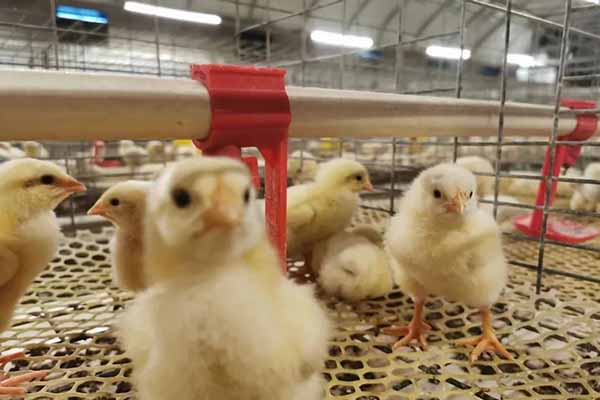Poultry Water Line System for 100,000 Chickens in Nigeria: A Comprehensive Guide
Introduction to the Poultry Water Line System
Water is a critical component in poultry farming, ensuring the health and productivity of the chickens. In a large-scale operation such as a 100,000 chicken farm in Nigeria, an efficient water line system is essential. This article delves into the design, installation, and maintenance of a poultry water line system tailored for such a scale.
System Design Considerations
When designing a water line system for a 100,000 chicken farm, several factors must be taken into account:
- Flow Rate: Estimate the required flow rate based on the number of chickens and their water consumption needs. Chickens typically consume about 1 to 1.5 liters of water per day.
- Pressure: Ensure the system can maintain adequate pressure throughout the farm, considering the elevation changes and the distance between the water source and the chicken houses.
- <strong-materials: Use durable materials that can withstand the harsh poultry environment, such as stainless steel pipes for water lines and plastic for sprinklers.
Components of the Water Line System
A typical water line system for a 100,000 chicken farm consists of the following components:
- Pump Station: A robust pump station to supply water to the entire system.
- Tanks: Storage tanks to hold water, ensuring a constant supply in case of power outages.
- Water Lines: Distribution pipes that run throughout the farm, connecting water sources to the chicken houses.
- Valves: Control valves to regulate water flow and pressure.
- Sprinklers and Nipples: Devices that deliver water directly to the chickens.
Installation Process
The installation of a poultry water line system should be done by professionals to ensure its efficiency and longevity. Here’s a general overview of the process:
- Site Survey: Conduct a survey to identify the best locations for water tanks, pumps, and distribution lines.
- Material Selection: Choose the appropriate materials based on the farm’s specific requirements.
- Piping: Lay out the water lines, ensuring they are at the correct elevation and distance from each chicken house.
- Testing: After installation, test the system to ensure it functions correctly and meets the required flow rate and pressure.
Maintenance and Upkeep
Regular maintenance is crucial for the optimal performance of a poultry water line system. Here are some key maintenance tasks:
- Cleaning: Clean the water lines and sprinklers regularly to prevent clogs and contamination.
- Inspection: Regularly inspect the system for leaks, corrosion, or damage.
- Replacement: Replace worn-out or damaged parts promptly to avoid system failure.
Conclusion
A well-designed and maintained poultry water line system is essential for the success of a large-scale chicken farm in Nigeria. By ensuring a constant and clean water supply, you can improve chicken health and productivity.
For more information on designing and implementing a poultry water line system for your farm, please feel free to leave a comment or contact us directly. Our team at Livi Mechanical offers free chicken farm design plans and equipment quotes. Don’t miss out on optimizing your farm’s water supply!





